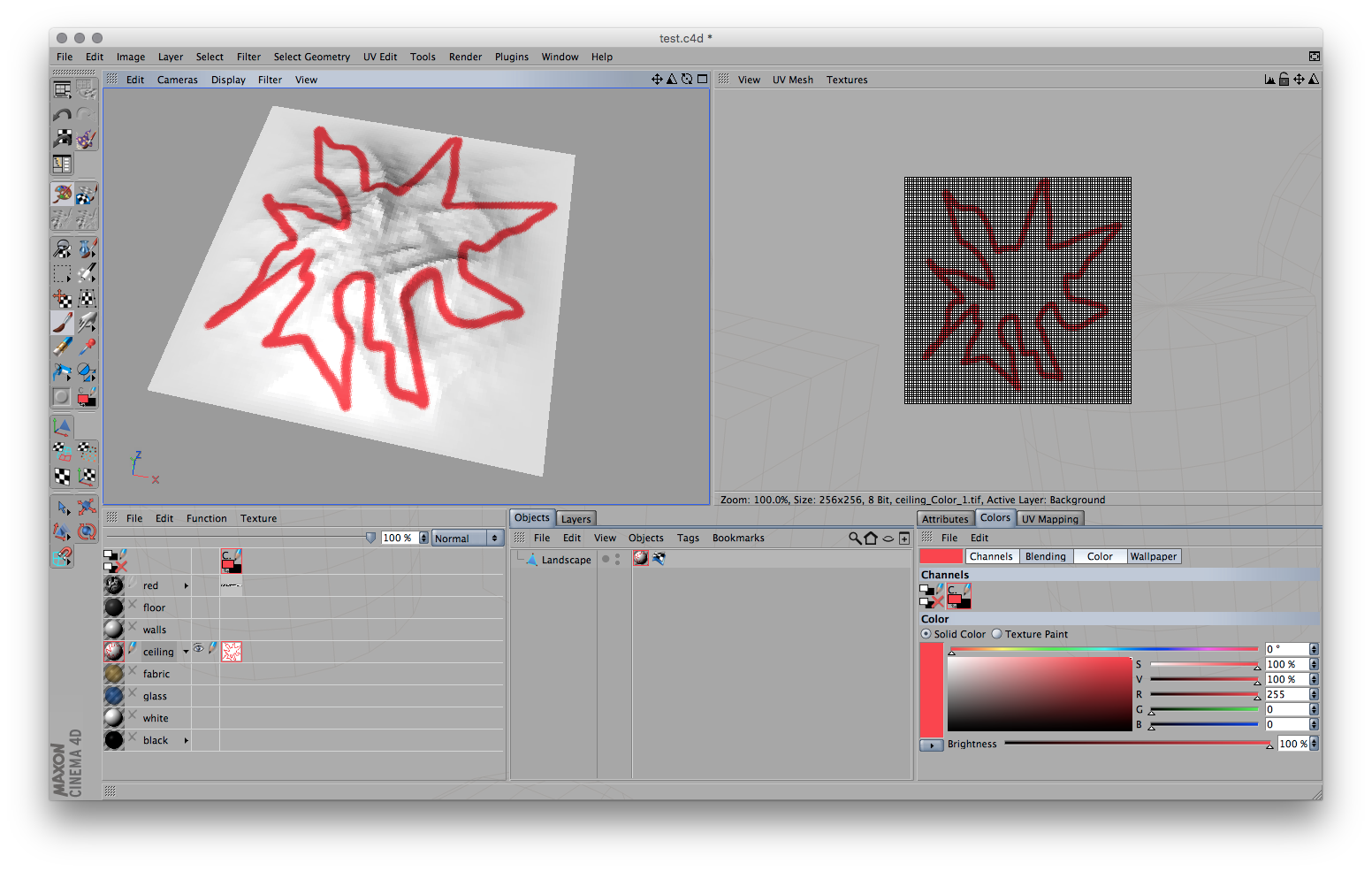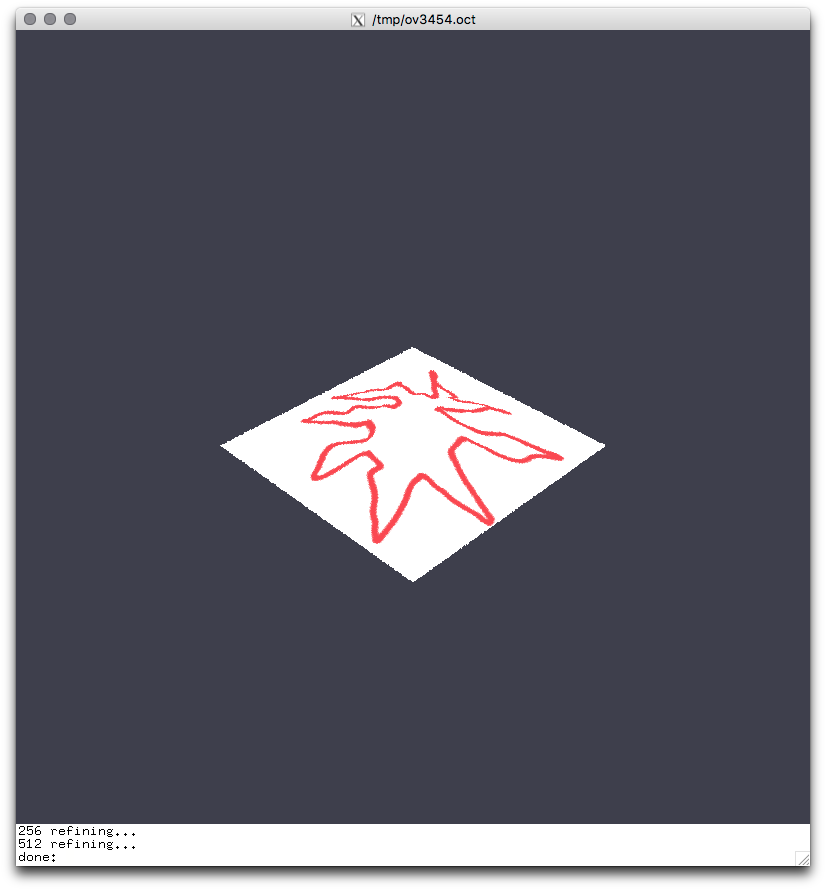UV Mapping in Radiance


There is an easy way to use UV mapping, even for procedural texture...just create a UV mapped .obj model and save it.
Then edit the radiance material file and use:
obj2mesh -a model.mat model.obj > model.mesh
Now load the mesh with the primitive mesh in a radiance file and save as model.rad
void mesh id 1 model.mesh 0 0
Notes:
- Light can be placed in a mesh but it will not not work.
- Meshes are frozen. Any change to the OBJ model will require regeneration of the mesh.
To attach a pattern (tif image) you need first to convert it to Radiance HDR:
ra_tiff -r image.tif image.hdr
This generally works but may have problems with more exotic tiffs; just use a plain type.
Now you need to get the ratio between horizontal and vertical image size:
getinfo -d image.hdr | rcalc -e '$1=$5/$3'
Note that this number, (W/H), must to be > 1, so if the ratio is 0.8 you need to consider 1/0.8 (i.e. H/W) instead; This image ratio is referred to as R in the following notes.
Let's define a few things
- The image scale is:
- Su,v
- 1 = 100%, 0.5 = 50% and so on
- If you need to translate, in fraction of u,v the parameter is:
- Tu,v
- 1 = 100%, 0.5 = 50% and so on
- The image ratio is defined by two values, one is a unit (1) and the other the previous R value:
- Ru, Rv
- thus 1,R or R,1
The material definition, verbose style, will be:
void colorpict image 7 red green blue image.hdr . R*((Lu-Tu)/Su-floor((Lu-Tu)/Su)) 1*((Lv-Tv)/Sv-floor((Lv-Tv)/Sv)) 0 0
or (note that Ru and Rv are swapped):
void colorpict image 7 red green blue image.hdr . 1*((Lu-Tu)/Su-floor((Lu-Tu)/Su)) R*((Lv-Tv)/Sv-floor((Lv-Tv)/Sv)) 0 0
A material definition, with indexes is as follows:
void colorpict image 7 red green blue image.hdr . A1*((Lu-A3)/A5-floor((Lu-A3)/A5)) A2*((Lv-A4)/A6-floor((Lv-A4)/A6)) 0 6 Ru Rv Tu Tv Su Sv # edit the Ry, Rv Tu Tv etc. with the values desired. # 6 A1 A2 A3 A4 A5 A6
This is a color layer which needs to be used in conjunction with a base material such as:
image plastic ceiling 0 0 5 1 1 1 0 0
New possibilities
Once you have Lu and Lv defined you can use them instead of Px Py Pz and all procedural patterns, wood, marble, waves are available for any surface in Radiance.
